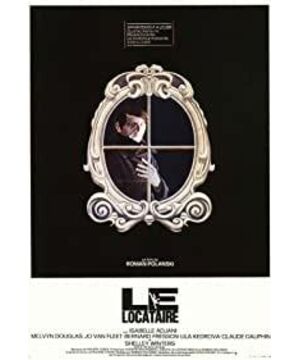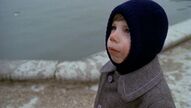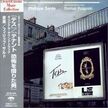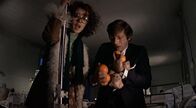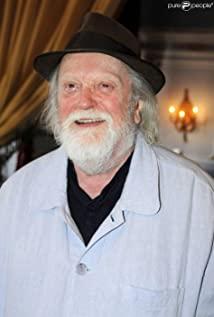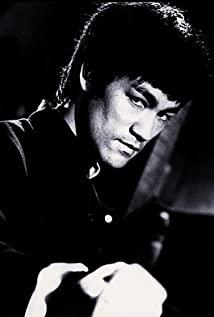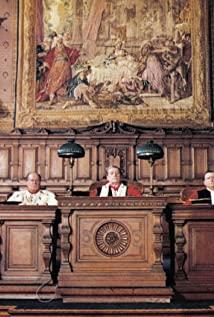Delay
Let us imagine: a beam of light needs to penetrate the vast space to come here, and when it arrives, it brings the appearance of a planet in motion, but the tremors of the surrounding earth and the withering of grass blades reveal the opposite message, "Everything is It's too late, everything is too late..." The starlight is dead, and everything is bathed in false light.
I often think this way, this is the debt that light is destined to shoulder, and the invention of film in the early 20th century resides in the eternal debt caused by this [persistence phenomenon]. In my knowledge system, Hitchcock is the first master who loves to describe this debt phenomenon. If "Butterfly Dream" still borrows the outer shell of a romantic novel, "Victorius" can be one of the most original mysteries of the 20th century. The movie starts with the debt of the death of a colleague, and ends with the repayment of the lover’s second death. [Fear of heights] is a symptom of [Debt]. The symptoms can be summarized in the film into two types: Stopping him at a height Eyeballs dragged him.
"Victorius" may be [scene distortion, overly colorful, overly dramatic, over-dead shots, re-rendered soundtrack from beginning to end] (borrowing a comment from Teacher Papo), but Hitchcock has the ability to create a legacy from it. The illusion of soul lingering makes it mournfully permeated the overly bright and empty San Francisco city, encapsulating the fragrance of roses; stagnating on Stewart's classical face, slowing his retention.
The colorful fragment of the whole movie is that the detective drags Judy onto the clock tower and yells: "You're my second chance" (you're my second chance). The movie may be [the second chance], for the protagonist, for the viewer, and even more so for the director-movies always come too late, and this desire to make up and repay will easily Expose the essence of your dreams.
It's too late, the sound and light are slow, and the world is moving with a false vitality like a living corpse. In the silent theater of "Mulholland Road", the host (magician) said: "There is no band, everything is recorded in advance. There is no band, but the music can be heard." Crop out from the image, and then the emptiness resounded in the azure blue theater. At that moment, matching and synchronicity (a power of recognition) faded. Instead, "delay" swept the whole film with convulsive guilt, and then it seemed The solid phantom world dissolves into a pure sound and light phenomenon. But even this realization is late.
mummy
Bazin made an inference at the beginning of "What is a movie": movies can mummify reality, and photographic images create an ideal world that conforms to the original appearance of reality and exists independently in time. But judging from the results, after the initial ontological stage of "Dasein was", the film also successfully evoked [the actualization of the mummies]. Imagine that the photographed past is no longer the past, but an image that is actualized or being actualized. Things escape any time and space constraints through the touch of the camera, and have the potential to reanimate in the viewer's mind. In the middle of the article, Bazin mentioned the vaguely ghostly family photo album, calling it "the stagnant moments of the life of a flirtatious life", which is similar to the attempt by Roland Barthes in "Bright Room". Both are in Discussions involving ontology have approached the cusp of time and hovered at the edge of the maelstrom of images, while the mass production of the film industry and the popularization of mass images have maximized the potential for deep connection between images and individuals. Now we cannot When dealing with images that have not decayed every day, Derrida said that "the future belongs to ghosts" (the future belongs to ghosts) is exactly that.
The mummy casts a false light on the screen. It is neither a living presence nor the absence of the dead. With the rotation of 24 frames, it calls for the repayment of the debt with ghostly vitality, and in order to understand the debt, An evil must become the primary object of attention, contemplation, and enjoyment. Frankenstein collected debts from the doctor who gave him life, Nosferatu collected debts from the staff and his wife on the grounds of real estate business, Romero's "living dead" demanded a decent funeral and farewell in Zizek's writings.. .... It can be seen that the devil is a desire for possession (take possession, which can resolve the ambiguity of "demon" and "grabbing property"), but often they also need to understand their desire over time, and excess life makes them Unbearable.
Among the genres, horror films are best at giving [Mummy] a layer of life-like appearance. In order to maximize this presumptuous life appearance, many directors first understand terror as a physical threatening ability. This means The horror must be completely unrecognizable, with fangs and claws, and be able to appear in front of the protagonist's escape direction at any time, so Linda Williams classified the horror film as [too early! ].
But to what extent does this superficial distinction framework work? Although there is merit in taking the body's response into consideration, as long as the adrenaline that is proliferated in the stress response is removed, will fear no longer grow? Here might as well take the time to discuss the classification of Linda Williams. It is a typical mistake for her to classify "Videotape Murder" into the second category below. Refer to the dialogue scene between the manager and the old woman.
The manager in "Video Tape Murder" believes that the artistic quality of this video tape (videodrome) is real and avant-garde, which is different from the old-fashioned "Apollo and Dionysus". The old woman warned that it was not the same. It’s not a new invention. The philosophy of this videotape is incredibly far earlier than Aristotle’s catharsis, and also far earlier than Dionysus’s Bacchus. What is staged in it is only true torture and murder (torture). and murder). What the manager tried to enter was an old cruel theater. He was bewildered by the appearance of the dead video tape maker on the TV screen. He was unable to save his masochistic girlfriend. He was not the first individual to make this attempt. What he did after the video tape entered the body was completely [repeat the same mistake], and finally he concocted his own death based on the video tape. (Too late!)
William Burroughs asserted that “when light becomes the main medium of image production, images will become infinitely multiple, complex and universal.” Cronenberg is a faithful practitioner of this vision. In the 1980s when videotape culture was fashionable, Cronenberg was fascinated by the mysterious black box characteristics of videotapes. In his eyes, this is the real [mummy]. Looking at this coffin-like black box and the winding "bandage", who can Thinking of the immortal light inside... He imagined the death that could only be realized in cyberspace in the future with a videotape, and put down the lost world that is indistinguishable for a long time on the videotape; his film was only when I first saw it. The sudden bloody violence is the first to call for a history of violence (a history of violence, Cronenberg's work in 2005) and every debt that cannot be paid.
Polanski's "Strange Tenants" is also an excellent exploration of the movie's mummy theme. Not only is the former guest Simon Zhou introduced in the film as a mummy obsessed with ancient Egyptian civilization, it is also a direct reversal of life, to the extent to which the subject will succumb to a petrification of terror if it internalizes terror. Effect, become the next victim of this altar.
In the film, the apartment where Trikuski lives and the community in Hitchcock’s "Rear Window" form an intertextual relationship, but the former goes deeper logically—before the "Victoria" For several years Hitchcock still believed that a neighbor was committing the crime. Compared with the intense human fireworks in "Rear Window", the apartment in "Strange Tenants" is simply a miniature and isolated model of the universe. Residents can look at each other with obscene curiosity, but the information and heat conveyed by the light are exhausted in the middle of the silent space, so that through the windows, they can only receive the image of the neighbors on the window, which is similar to the window. A rigid [tableux vivant] (tableux vivant). (This is not necessarily just a metaphor. The lady who came to Trikuski’s room mentioned that a gentleman was standing on the balcony until his death, because there was no neighbor to remind him in time.) Until the protagonist raised his head on the bathroom engraved with Egyptian on the wall The synchronic chain of the situation suddenly broke when we met myself who had been peering into the window before. Here we encountered the purest [delay phenomenon]. The mummy also untied the bandages while grinning at the window.
Be a victim
Horror can be a long-lasting curse, or a lingering phantom, but without the active cooperation and transfer of the viewer, it would be meaningless to talk about the ghost of the movie abstractly. After Trikuski jumped off the window sill for the first time, Polanski’s obstacles that Polanski had set before the audience disintegrated on its own. All the tenants removed their masks of indifference and hostility. At this moment, we can see that he pushes himself up. The dead end. Polanski's answer in "Strange Tenants" is: To be afraid is to fall into fiction, which is to succumb to the power of others.
I think of a fairy tale in "The Grimm's Fairy Tales" about a young man who goes out to find what fear is at any cost. He is immune to any ghosts and ghosts that appear, and by defeating them, he escapes and obtains the right to inherit the kingdom. He didn't realize it until the queen's maid poured a bucket of river fish on his head while he was asleep. This story points to this point. Fear has its own texture and mechanism. If you don’t abide by certain fictional generation rules, ghosts can’t help people who are not afraid of it.
The child crouching on the sofa late at night, he believes what is lurking in the shadow behind the door. It is not a symbol flickering, nor is there any identifiable indicator. Even the movement is weakened to the greatest extent, but he believes there is something. He is about to come alive. In fact, he has already seen the superposition of the image of the mind and the vision, and when we imagine a terrorist, we always substitute ourselves as victims. Perhaps at that moment we are watching a meta-movie in which we are victimized. The point is that there is no terror that does not concern yourself.
The fear of children holds the wheel that connects the two worlds. This is the fictional game in which we plunge ourselves. At first, I was just curious about the harmless clues. It was just a light game with all the toys in the world. But in the next stage, the power of the fiction makes people sweat, and the individual finds that it is too late to get out of his own game, such as a certain A philosopher said: Fear is the fear of losing control. Like being in a nightmare, people are visited and dominated by countless thoughts and images, not the other way around.
In "Strange Tenants", Polanski gave up almost all narrative and visual tricks, focused on scheduling, and tried to present terror in the minimal and sluggish movement. This can first be understood as a kind of Active invitation. In order for the next person to fall willingly into the bottomless abyss, all designs can be regarded as props for a big show of pretending to be real, just like a ball can be a human head flying through a window in the next second.
According to the above: "To get rid of fear is to fall into fiction." Trikuski realized that he was the next target of persecution and extremely denied that he was Simon Chow. At the same time, he played Simon Chow in himself. The image of, playing with his newly acquired victim status-after all, who can be more innocent than the last victim? In Kilar's writing, for an unrecognized person, his desires are inevitably imitative. The more he tried to prove his existence to the other, the more he slid into the space pre-delimited by the other in the imitation. It was Simon Zhou who really got the promise of life in his playing game.
The audience may ask: Didn’t Trikuski see through all of this later, why should he insist on choosing death? In fact, at the end of the film, he is like a tragic hero who is willing to accept his own bad luck, as long as the bad luck really belongs to him (this is him, the only property and debt of a tenant). Kierkegaard talked about this kind of "despair of willing despairingly to be oneself" in "Deadly Disease" (the despair of willing despairingly to be oneself)
He convinced himself that the pain of the thorn in the flesh was so deep that he could not pull himself out of it (regardless of whether it was the actual situation or his strong feelings made him believe it), therefore, he was willing to Accept it as eternal... He would rather (if necessary) be himself with all the pain of hell... It is too late. He used to be willing to pay all the price to get rid of this great pain, but he just waited and watched; now it is too late, and now he would rather oppose everything in anger, he, the most unjustly treated person in all existence, It is of special significance for him to ensure that his pain is in his hands and not let others take it away, because then he can confirm to himself that he is right.
The result is that no one in this conviction game has committed more crimes to himself than he has committed. It is this innocence and innocence that destroyed him, so that he believes that he needs a wrong sentence, as in Camus’s "The Outsider" "As written, he wanted as many people as possible to observe his suffering.
Digression: Regarding the turmoil caused by "I Accuse", I think Polanski himself had insight into the mystery in the 70s. For a person who survived such a tragedy and its effects, what is innocence and what is Harm? No amount of attacks, hatred, and slander will only become a gray monument of his personal life. It is not difficult to imagine why the protagonist of "Strange Tenants" is played by him himself. He strives to perform his own cross-dressing and victim tendency, arranges for himself a slightly obscene rivalry with Ajani, and even performs his own death. He is familiar with malice as familiar with his right and left hands. I wonder why he should make a historical film about the Dreyfus case in a few decades. Polanski himself probably wants to enter a respectable old age. Bar.
Repeated deaths (this chapter is under construction)
In this kind of film, the real death needs to happen twice. But this is far from being a tautology of the same event. In fact, it is much more complicated than this. In terms of its importance, the first death is only a rehearsal of the second pale, and the first death is also The second faithful imitation object. Just as the detectives in "Victorian" tried to restore Madeleine's murder, and like the manager who imitated the videotape suicide in "Videotape Murder", the "second death" was saturated with artificial imitation efforts.
Sacrifice violence
Although "Strange Tenants" is completely based on real-life shooting, it is more fictional and mythical than most horror films with mystery. For its part, Polanski has surpassed in this film. This film may be closer to the tradition represented by Kafka and Allan Poe (as suggested by the "elliptical portrait" on the poster). On the other hand, it may try to have a dialogue with a more ancient literary tradition.
In the classic scene of a human scalp, Trikuski looked down through the window and seemed to have a glimpse of a world that did not belong to his own time. The tenants in the apartment seemed to be holding an ancient ceremony, which was previously excluded. The mother and daughter were trapped in the crowd. The besieged daughter was put on a face mask that resembled the protagonist. At this moment, she pointed up Trikuski's figure, and in a flash he became a target of hatred in the community.
The origin of the ancient Greek tragedy is inseparable from the ritual of the Bacchus sacrifice. Aristotle tried to define a standard tragic hero in "Poetics": he cannot be a pure outsider or a native, he should be similar to community members but be distinguished, he cannot be totally good or Evil, his goodness brings him recognition and empathy, and his trait, which can be called a tragic flaw, enables the audience to endure the fall of a hero. These are just the tribe’s The basic requirements of living sacrifices.
Bataille wrote: "Sacrifice is a novel, a story with bloody illustrations." It is very appropriate to compare sacrifice with the most vivid fiction here, because the latter is the most abundant fuel for the former. The people of primitive tribes believed that by excluding the threats of the community through the will of the whole community, a new life could be ushered in. Therefore, the original tragic hero did not actually need inner motivation or involved in fierce drama conflicts. He was about to be brutally killed. The holy lamb, the original chorus is an accomplice who hides behind the theater with a terrifying mask and is ready to cry out for the sacrifice of heroes.
The fact of collective murder must be hidden away, at least hidden in the hearts of every believer who is willing to believe in its magical effectiveness, otherwise it will lose any achievable value, but this fact can withstand numerous divisions and deformations, and part of it remains. The outer shell of the ceremony partly becomes a secret part of community life, and partly it merges into the most subtle culture. The danger that Plato felt in the tragedy made him hope to expel the tragic poet. This and Aristotle’s defense of the tragedy are in fact an integral part. Both are a dim perspective of terror in the dawn of civilization, and the latter successfully The agglomeration of filth and violence is transformed into an object of knowledge.
To ask who is Odysseus, the answer is "no one"; to ask who is Oedipus, the answer is [everyone], isn't this incredible? Following the plague, Thebai city offered him as a scapegoat to the altar of the gods, and the new psychoanalysis at that time still squeezed his value as a typical figure. But what is typical, is it the sample in the laboratory or the black blood on the altar? No one is Simon Chow, just as no one is Trikuski, the individual's cry is blurred under the heavy bandage, but it seems to be the resonance of the throats of thousands of dead people.
The first dead
There is no doubt that the mummy’s roar will continue indefinitely. The question is, can we follow the roots of the victim up to the original victim? Does the world end with a whimper? Or did it start with a whimper? I still remember that Bataille attributed his initial artistic impulse to [guilt to sacred animals] in "Eroticism". I guess these prey should also be mixed with many unnamed corpses who died of unfavorable lives, because Bataille’s framework does not include anything. The second conception of collective murder talks about the confusion and substitution of human and animal sacrifices. In René Kilar’s most ambitious conception, there lies an [initial victim] at the source of every civilization, as The dead seed in the "Gospel of John" fell into the ground with thousands of seeds, and taught our ancestors to develop sophisticated, unique and interlinked rituals and cultures (even if acquired in blood and madness) ), to some extent she/he/they are the fragile and fragile culture itself.
Thousands of years of persecution games have made people convinced that it is not our civilization that is getting sick, but that our disease is gaining our own civilization. No matter how we evolve, we want to watch others die in our leisure time, (anyone can, or even ourselves, whether it’s true or not), don’t we?
The 20th century was a century plagued by violence. Many directors and writers tried to trace the source of violence. The most deductive one was to imagine an initial victim: those ghosts who wandered outside the surface narrative had already escaped from violence. The chain of mutual harm carries all the viewer's imagination of human nature. Because he/she/it is unable to tell its own story, it gives meaning to all the clues of the world, as if the image world is an order leaked from the victim's body, and the absurdity encountered in this situation is the shape of the wound. Its members are always reminded that they are in a world of death, where the dead replace them, and the dead refuse to die.
It is they who maximize the depth of introversion in the fictional world. We hope that these lambs on the altar will take our souls away. We are willing to dedicate all belated sympathy and excessive imagination, so that we can tear from the portrait. Transmutation into a silent fall of a certain world. In the labyrinth of images they are our Ariadne, on the stairs of heaven they are our Beatrice, in the flames of hell they are our Eurydice, just like Rebecca in " "Butterfly Dream", Madeleine to "Victorious", Simon Zhou to "Strange Tenants", Laura Palmer to "Twin Peaks" series, Nicki to "Videotape Murder", Marumi In "The Delusional Agent".
I have always liked a short poem by Dylan Thomas "Refusing to mourn the children who died in the Great Fire of London". In my understanding, this is a poem about the "first dead". In the poem, the children who died in the fire merge into the ranks of the first dead. Their death is always the simulacrum of the first death, opening the last ray of light in the cloud.
Until the creation of mankind
Dominate animals and flowers
The darkness that reigns over all things
Announcing the last ray of light in silence
And the still hour
From the restless sea under the yoke
And i have to enter again
Heavenly Court with Round Water Drops
And the Cathedral of Judea of Zea
I can pray for the shadow of a voice
Or in the valley of mourning
Sow my bitter seeds to mourn
The child died noble and majestic.
I will not murder
Her humanity that walks with the stern truth
Will never be naive
And the elegy of youth
To desecrate the port of life.
The daughter of London was buried deep in the same cave with the first dead,
Many close relatives and friends engulfed her,
Eternal dust particles, mother's dark blood vessels
Leaning indifferently
The continual flow of the Thames.
After the first loss of life, there was no other death.
(Translated by Wang Jianzhao)
If we bear some kind of original sin debt with this light, then follow this blood flow to trace the source, and we will find that there is a [heavenly court with waterdrops] in the rushing Red Sea, which is the fate of the first dead. This is why we should not mourn them. I am afraid that the sound of false mourning will overwhelm the clear tone. I am afraid that when we change hands, we will deny the remaining debt as an excuse to act as a scapegoat, or in the crescendo. It turned into condemning violence.
View more about The Tenant reviews


